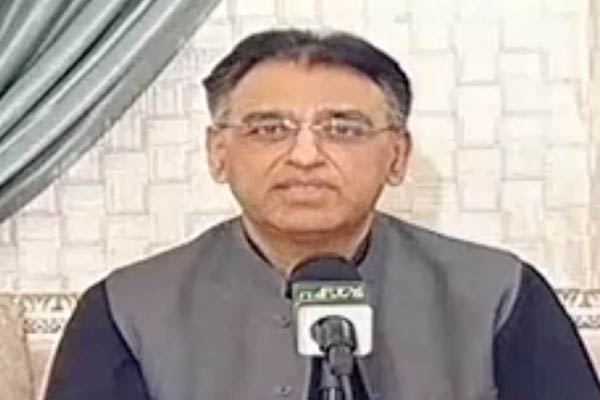
File photo
Planning minister predicts GDP growth to hit 4.8 percent in the next fiscal, citing government policies in I.T., agriculture and industry
Planning Minister Asad Umar on Friday predicted that Pakistan’s gross domestic product (GDP) would grow by 4.8 percent in the next fiscal year (2021-2022), stressing that this was a result of government’s policies, including a focus on agriculture and exports.
Addressing a press conference in Islamabad, he said that the government’s investments in the agricultural sector which would greatly benefit the national economy. Noting that the country’s cotton crop had been badly impacted in the past two years, he said the government had purchased high-quality seeds for next year’s crop, adding that the use of pesticides had also been encouraged, as there had been a great increase in international demand for cotton.
“After consultations with all the provinces, we have concluded that Pakistan can produce 10.5 million bales—4 million from Sindh, 6 million from Punjab, and the rest from other provinces,” he said.
The minister noted that the livestock industry had been adversely impacted by the coronavirus, but trends indicated it would move toward normalization in the next fiscal year, and there would be visible growth in the sector.
According to Umar, the government expects electricity consumption to grow by 6 percent in the next fiscal, adding that since a special package had been announced for industries, their power consumption had gone up 15 percent in the current fiscal. Growth is also expected in the gas, coal, and construction sectors, he claimed. “Exports are predicted to go up. This year they stood at $25.2 billion, and in the next year, they will move up to $26.8 billion,” he predicted.
Positive developments
Highlighting the achievements of the government in the current fiscal, the minister said I.T. exports had grown by 46 percent in the first nine months. He said the country had “witnessed a strong growth” and expected to see a boost to remittances from $21.7 billion to $29.1 billion by year’s end—a jump of 34 percent in a single year.
If the estimated 3.94 percent GDP growth is combined with the increase in remittances, he said, the gross national product had grown by 6.5 percent—“the highest GNP growth in the last 16 years.” He also reiterated the government’s stance of ensuring the right to vote for overseas Pakistanis, as their remittances played “an important role” in helping the country’s economy grow.
Similarly, the planning minister said that this year’s $25.2 billion worth of exports were the highest of the past 10 years. “It is unfortunate that the backbone of the economy, exports, faced several setbacks during the previous year,” he said, referring to the pandemic. He said next year’s target for exports would be $26.8 billion, which is the highest in the country’s history.
He also cautioned against expected massive spikes in remittances next year. However, he added, they were still expected to move up from $29.1 billion to $31.3 billion.
Growth budget
Umar said the Public Sector Development Program (PSDP) in the outgoing fiscal had been set at Rs. 650 billion and would be increased to Rs. 900 billion for the next fiscal year as part of the government’s aim for a “growth-oriented” budget. He claimed that growth during the current fiscal indicated that it would be even more than expected in the next fiscal.
Summarizing the development spending for the next fiscal year, the minister said the government would develop infrastructure projects such as the Hyderabad-Sukkur Motorway. The PSDP would also fund packages already announced for Karachi and select districts of Sindh, Balochistan, and Gilgit-Baltistan, he added.
Development funds would also be allocated for the construction of dams, while Rs. 28 billion would be allocated for health; Rs. 37 billion for the Higher Education Commission; and Rs. 5 billion for the skills education program launched earlier this week.
